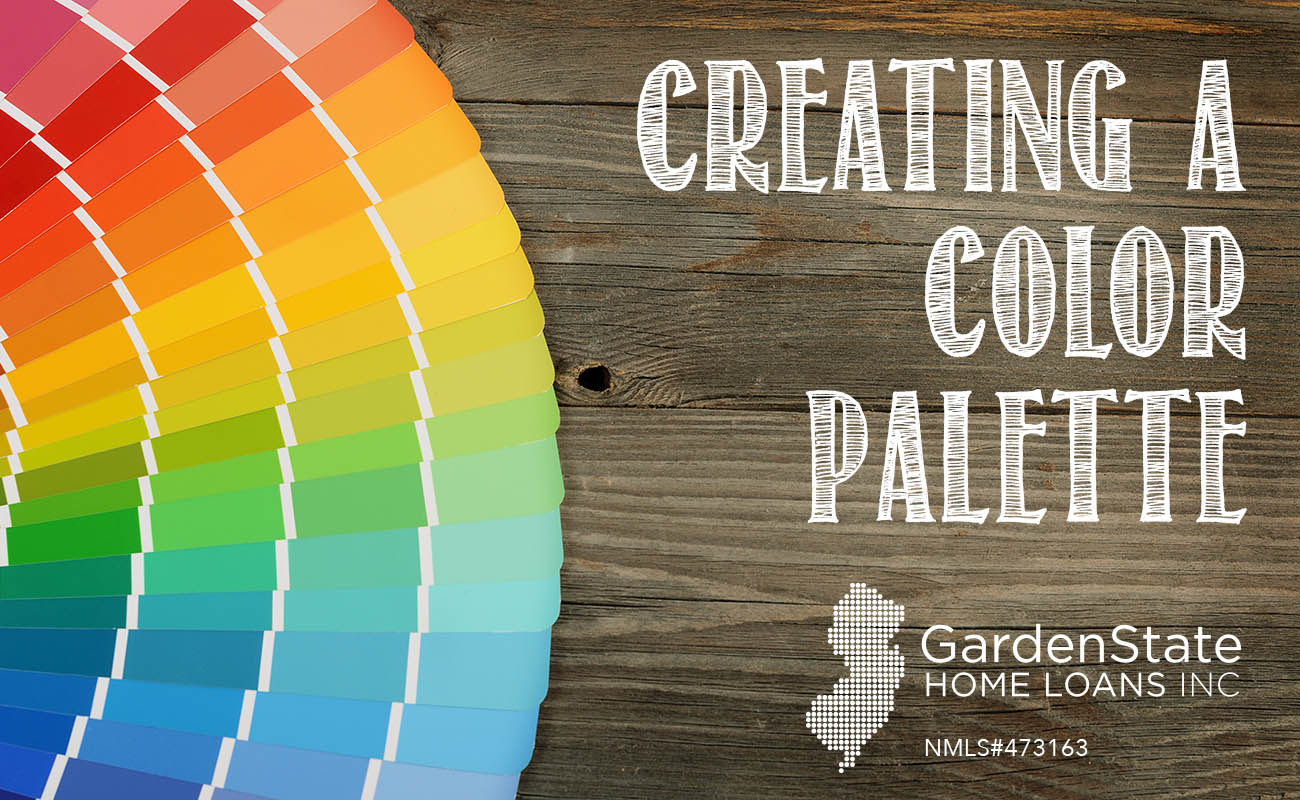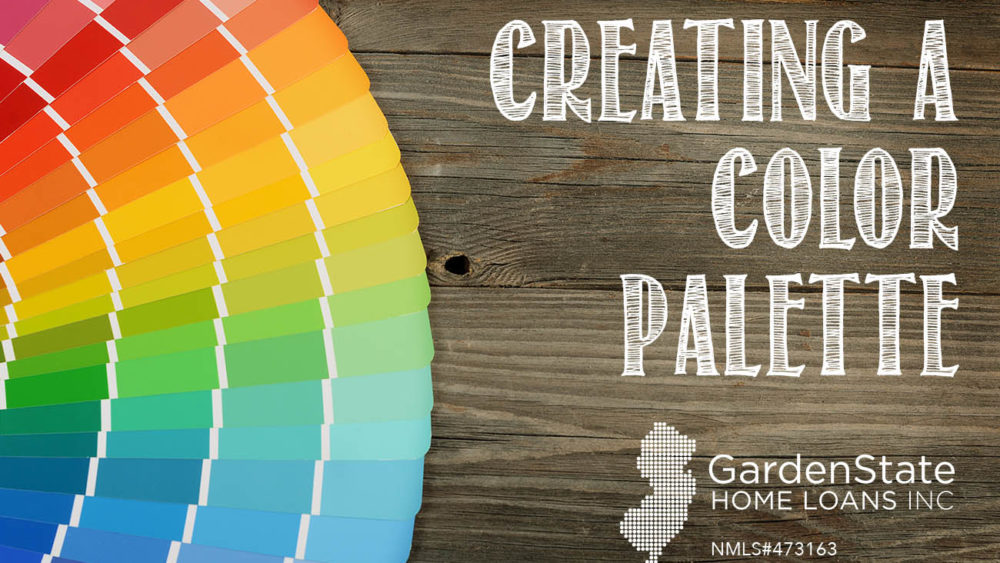
When painting your home, you may want to create a color palette to help keep a balanced look. Creating a color palette can seem overwhelming. Have you seen how many shades of white there are? However, it can actually be quite simple.
To start out, create a sort of blueprint for your home. Walk through your home and see what is visible from each room. Make note of any rooms that are adjoining – a kitchen and dining room, for example.
After you look at the layout of your home, you want to take note of all the colors of the fixed elements in your home. These include your trim, flooring, wall tiles, and countertops. After you make a list of these elements, you want to identify and record the undertones. An undertone is a subdued color, but more specifically, a color seen through or modifying another color. Warm undertones include red, orange, and yellow, while cool undertones include green, blue, purple.
To identify an undertone, hold up the true color against the current color. For example, if you have a red on your wall, hold up true red (meaning there are no other colors or undertones mixed in). This will give you an idea of whether the red has more yellow mixed in or blue, helping you determine if it has a cool or warm undertone.
When creating your color palette, you have two options:
Option One: Match the undertones. If you have warm undertones, choose a palette of cool colors to complement the warm tones. If you have cool undertones, choose a palette of warm colors.
Option Two: Contrast against the undertones. If the undertones in your home have mostly warm colors, choose cool colors for your color palette. If you home has mostly cool undertones, choose warm colors for your color palette. This helps the colors complement each other, and allows for an overall appealing color palette.
Once you have gone through your home, it’s time to decide what kind of color palette you want. There are many different color combinations you can create, but it all boils down to the same basic plans:
Monochromatic: A monochromatic color scheme uses different shades or hues of the same color. This creates a modern and clean look.
Analogous: On the color wheel, analogous colors are colors that are next to each other. They go well together because they are literally made of each other. This creates a calm and relaxing look.
Complementary: Complementary colors are directly across from each other on the color wheel, meaning they contrast each other. This creates a high contrast and lively look.
When creating a color palette, try to have five colors in your palette.
Color #1: a white
This will be the color for your trim, doors, and possibly your cabinets. While white is often thought of as a simple color, they still carry undertones, so you may want to stick with a white that matches the undertones in anything you are stuck with, like flooring or furniture.
Color #2: a neutral color
A neutral color should be used for walls that connect rooms, like halls and open living spaces. Neutral doesn’t necessarily mean beige tones. A neutral color could be used in a subtle shade or hue. If you would like to use a warm neutral, look at colors like warm whites through beige and brown. If you would like to use a cool neutral, look at colors like cool whites through black and gray. If you are indecisive, greige might be the perfect medium for you. It is simply a mix of gray and beige that works well with both warm and cool color palettes.
Color #3: a saturated color
Pick a color you love, and this will be the starting point for the rest of the colors in your color palette. Basically, this is going to be the main color for your home. You don’t have to choose a densely saturated color. It can always be a lighter shade!
Color #4: pick another color
If you are going for a monochromatic color scheme: this color will be a lighter shade of color three.
If you are going for an analogous color scheme: this color will be a color that is next to color three on the color wheel.
If you are going for a complementary color scheme: this color will be across the color wheel from color three.
Color #5: an accent color
Your fifth color will be an accent color in some spaces, but also may be used as the main color in other rooms, so keep it interesting!


Comments are closed.